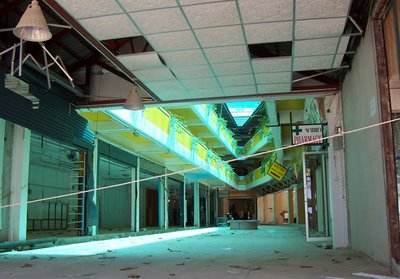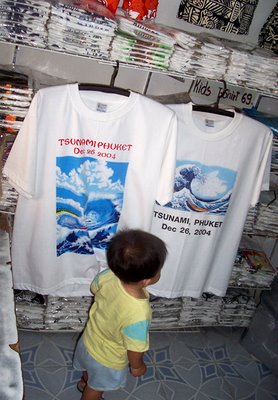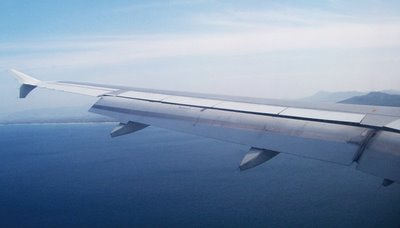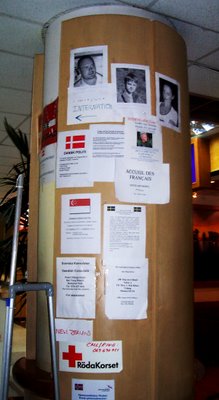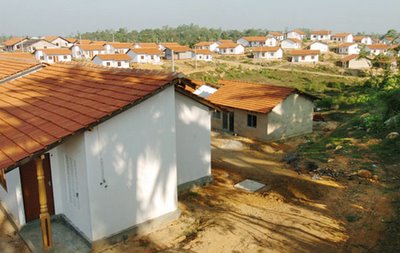(Part 4 of a 12 part series)
Five weeks after the Tsunami hit, Sishir Chang went to Thailand to see how the people there were recovering and to see how those concerned could help. The following is the fourth installment of his experiences in the aftermath of one of the world'’s most devastating natural disasters. Originally published in the Southasian, the article is being republished here, with previously unpublished photographs, with the author's permission.
______
Part 4: THE DAMAGE
In the main tourist town of Patong and many other places the damage is hard to ignore. Even though all of the bodies and most of the debris has been cleaned up it would be impossible to miss that a major disaster had struck here. All along the waterfront there are still ruins. Frantic repair and rebuilding efforts are in progress and many businesses have reopened even in the midst of the devestation. Thai tsunami survivors Taem and Chai (many Thais go by a single monosyllabic nickname) had set up a drink stall in the foyer of a ruined building. Taem pointed out the staircase where she had run up when the tsunami hit and mentioned that three people had died including one American in that building. Still she had come back and set up shop again in the middle of the now derelict building.

DRINK STALL IN DERELICT BUILDING, IMAGE FROM SISHIR CHANG
Sights like that became fairly common in Patong and it wasn’t unsurprising to walk into a ruined building and find people selling t-shirts, DVD’s or even some tourists sitting down to lunch with a sea view thanks to a wall destroyed by the tsunami. Everywhere I went the Thais put out their best face to visitors and, at least on the surface, there was no trace of depression or misery about the tsunami. One restaurant even posted a banner saying “The Tsunami Can’t Beat Us! We still have the best Homemade Pizza in Town.”
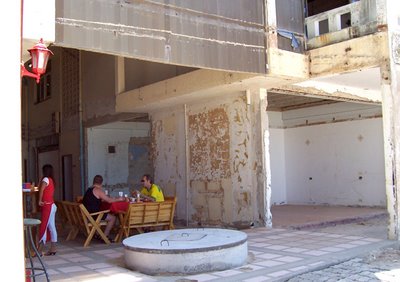
LUNCH WITH A NEW VIEW, IMAGE FROM SISHIR CHANG
Other places were in worse shape than Patong with the worst at Khao Lak and Bang Niang a 100 kilometers (63 miles) north of Phuket. There resorts had been practically wiped out leaving the area looking more like a war zone than a vacation region. Running along the cost for about 25 kilometers (17 miles) was devastation coming inland almost a kilometer (2/3 of a mile). The land there in many places appeared to have been cleared of both human structures and plants down to the orange colored dirt. At one spot that is rapidly becoming a tourist spot a police patrol boat had been washed ashore a kilometer. That spot also showed the sharp limit of the tsunami. On the seaward side of the boat it was cleared out dirt while on the landward side there was still jungle.
In the ruins of the resorts steel rebar sat twisted like spaghetti along with blown out brick walls, and pulverized concrete as testaments to the power of the tsunami. There also were many reminders that at one time this was a place of fun and relaxation, an elegant shoe, a bikini top, eyeglass cases and even a guidebook to Thailand. The ghosts of those who came to this place to escape the stress of their daily lives was almost palpable. To appease those ghosts scattered throughout the ruins was “ghost” money, the Taoists paper talismans meant to appease the dead, and offerings of flowers and fruit. In ironic counterpoint to all of the death and destruction the beach appeared to be the one place that still remained beautiful.

REMINDERS OF FUN AND RELAXATION, IMAGE FROM SISHIR CHANG
Like many natural disasters the tsunami showed a surprising capriciousness. While Khao Lak suffered the most it was geographically the farthest from the epicenter of the quake that spawned the tsunami. Patong was damaged badly and the next beach north Kamala was also badly hit yet Surin the beach after that was untouched. The chance arrangement of geography, water depth, sheltering islands and reefs all conspired to determine how bad one place was hit while another was spared. As chance would have it many of the most places coveted by tourists were hit while those mainly occupied by Thais were spared.
